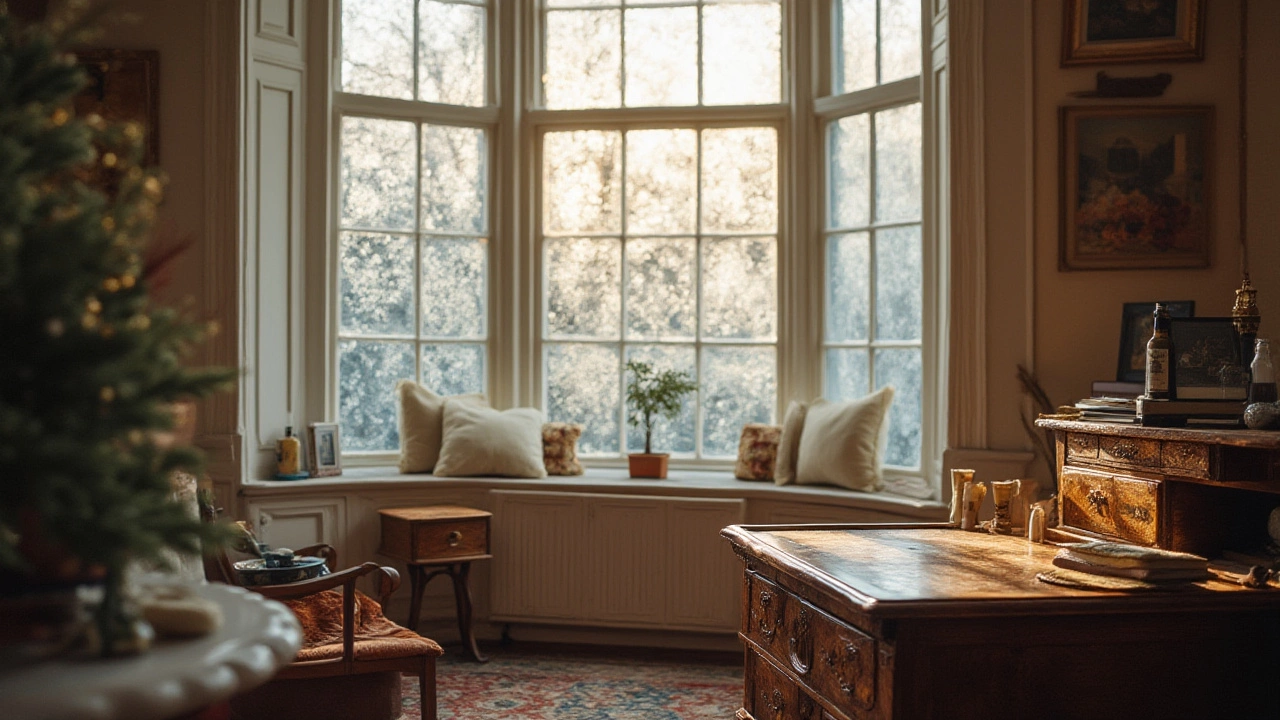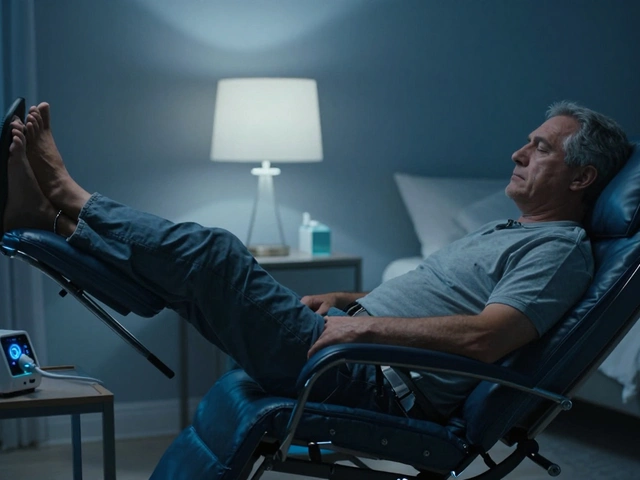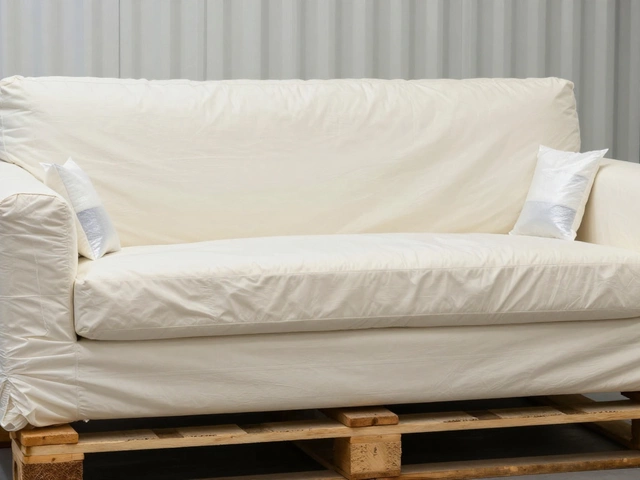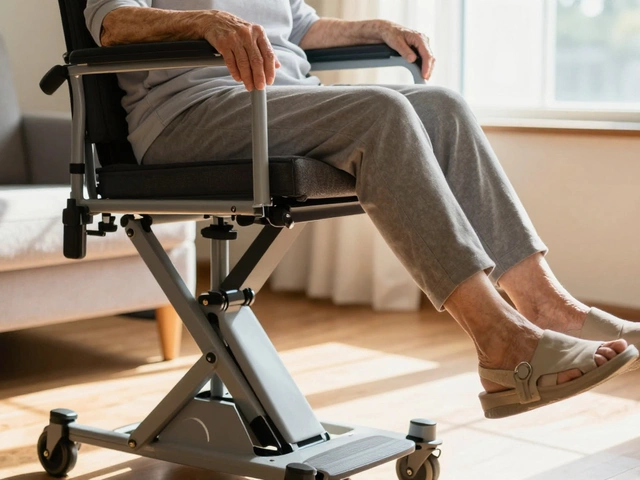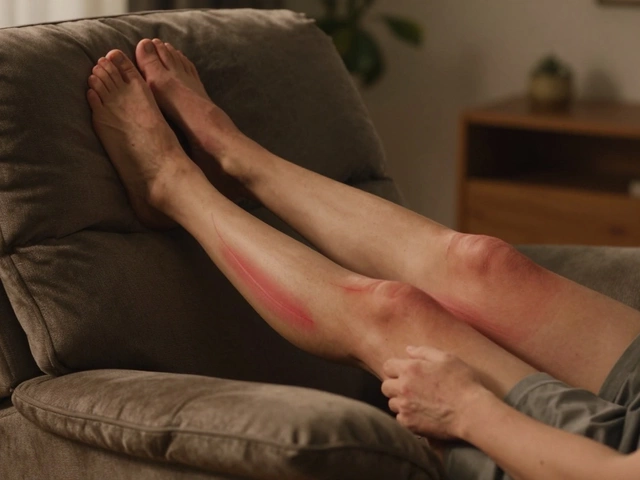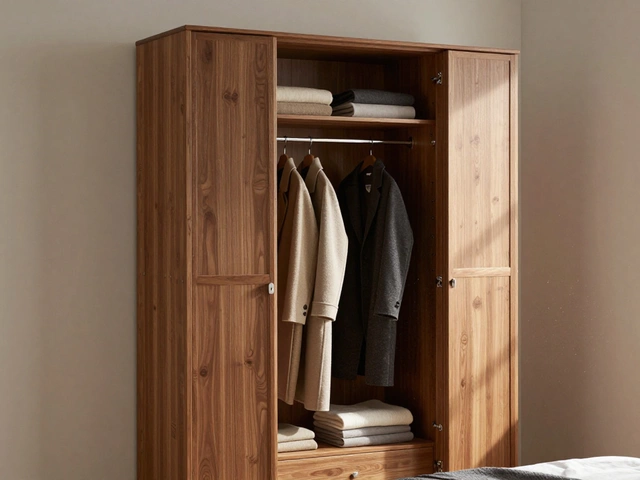Open your social feed in mid-January and you'll see a wild mix: friends posting cozy living room photos, snow-dusted patio sets, and sometimes, heartbreaking shots of warped tables or split cabinets. We treat our furniture like permanent fixtures, but few people realize it: cold can silently ruin your favorite pieces. Think a solid oak dresser will stand up to a freezing cabin? Think again.
What Happens to Furniture in Cold Temperatures?
When you crank the heat up in your house, it’s usually not your furniture you’re worried about—it’s your toes. But step outside those cozy walls, especially on days when the forecast is dipping toward freezing and beyond, and your porch swing or garage-stored bookshelf is in for a wild ride. Cold air can wreak havoc on wood, metal, and fabric. Wood expands and contracts as temperatures swing; below freezing, wood loses moisture and shrinks, often for good. Those cracks in your antique end table? Chalk them up to a winter spent in an uninsulated attic.
Let’s get specific. Most solid woods—oak, maple, walnut—start experiencing permanent shrinkage and microcracks at temps around 32°F (0°C). Drop that lower—say, below 20°F (-6°C)—and those little cracks can become splits you can fit a dime into. The process is sneaky: furniture doesn’t usually shatter, it warps, creaks, and changes shape in slow-motion. Think about musical instruments; violins and guitars need careful humidification in winter, and your furniture isn’t very different.
It isn’t just grandma’s wooden dresser you need to worry about. Particle board and MDF furniture—the kind you might get from IKEA—are even more sensitive. That glue holding things together can become brittle and pop apart below freezing, which is why many moving companies refuse to leave pressboard furniture in trailers overnight. If you like your metal furniture tough and indestructible, cold brings its own problems. Metals contract in the cold, which can loosen bolts and create weak spots. Plus, that nice powder-coated patio table? If moisture sneaks into a scratch and then freezes, you’re staring down a future of flaking paint and rust blooms.
Upholstered pieces also have their own battles. Genuine leather and some faux leathers can stiffen and crack if left in the cold, especially if they dry out. Foam cushions get rock-hard, then lose their bounce long-term if repeatedly frozen and thawed. And don’t think fabric is immune—freezing can cause brittleness or even mildew if there’s humidity involved. Care about those numbers? Here’s a breakdown in a simple table:
| Material | Damage Begins (°F) | Type of Damage |
|---|---|---|
| Solid Wood | 32°F (0°C) | Shrinking, warping, cracking |
| Particle Board/MDF | 40°F (4°C) | Glue failure, swelling, splitting |
| Metal | 5°F (-15°C) | Bolt loosening, rust under paint |
| Leather/Fabric | 32°F (0°C) | Stiffening, cracking, mildew |
The punchline? If a room is too cold to be comfortable for you, it’s probably not safe for your furniture either.
Which Types of Furniture Suffer Most?
Some pieces are natural survivors: stainless steel tables, synthetic wicker, plastic garden chairs. But others fade fast. Antique dressers made from solid wood, for example, lose structural integrity with every cold snap. Humidity swings worsen the effect—dry winter air draws out moisture, then spring dampness rushes back in, and the cycle repeats. If your storage plan is just stacking things in the garage or crawlspace, you’ll be shocked what happens by spring.
Wood furniture ranks as most vulnerable, especially thicker, joined pieces like oak dining tables or sideboards. Wood is, at its heart, a bundle of thin pipes that once carried water. Get it cold and dry enough, and you risk catastrophic checking—long, ugly cracks. Vintage furniture—especially items with old-fashioned animal glues—hates temperature changes. Those glues get brittle in the cold, snapping apart at joints. Even high-end pieces from the last 20 years often use PVA glue, which loses its strength under extreme cold. That gorgeous seam down your mid-century modern coffee table? It’s the first thing to fail.
Let’s talk about more modern, budget-friendly options. Laminated particle board does fine if you never let it freeze. But try forgetting a bookshelf in an unheated self-storage unit over winter, and it might sag, delaminate, or even crumble when you try to move it. Particle board swells with humidity, then contracts as it dries in cold air, and the glue can’t keep up. Rarely does it split noisily—more likely, you notice loose joints, bubbling, or entire backs popping off in your hands. Desks are especially at risk since they’re often wide, thin pieces of MDF glued together—cold makes the glue brittle and the particles shift.
Leather and fabric sofas suffer a slower, quieter slide toward disaster. That buttery leather may feel luxurious now, but come February, all that dryness in the air cracks its surface or leaves discoloration. Open the attic and grab a fabric armchair in early spring—if there’s been even a hint of moisture, condensation, or snow tracking, there might be a musty smell and signs of mildew. And yes, that’s true even for synthetic fabrics: mildewed foam is nobody’s favorite home scent.
What about outdoor furniture? Some materials—teak, cedar—are naturally resistant, but nothing is invulnerable. When snow piles up and then melts, the sudden cold/hot/cold cycles submerge wood, which then swells and splits as soon as it freezes again. Even powder-coated aluminum gets tested: freeze-thaw openings form beneath the paint, which can cause bubbling or hairline rusting by summer. Here’s a quick list of ‘high-risk’ furniture pieces for the cold months:
- Antique or vintage wooden cabinets, dressers, desks
- Newer particle board or MDF shelving, desks
- Leather armchairs, sofas with foam interiors
- Powder-coated or painted metal tables and chairs
- Piano benches, bookshelves, or any furniture with fine joinery
If you love your home’s pieces, pay attention to what’s being stored where. Every winter, moving and storage companies end up dealing with a flood of broken or warped furniture—most of it, totally avoidable.
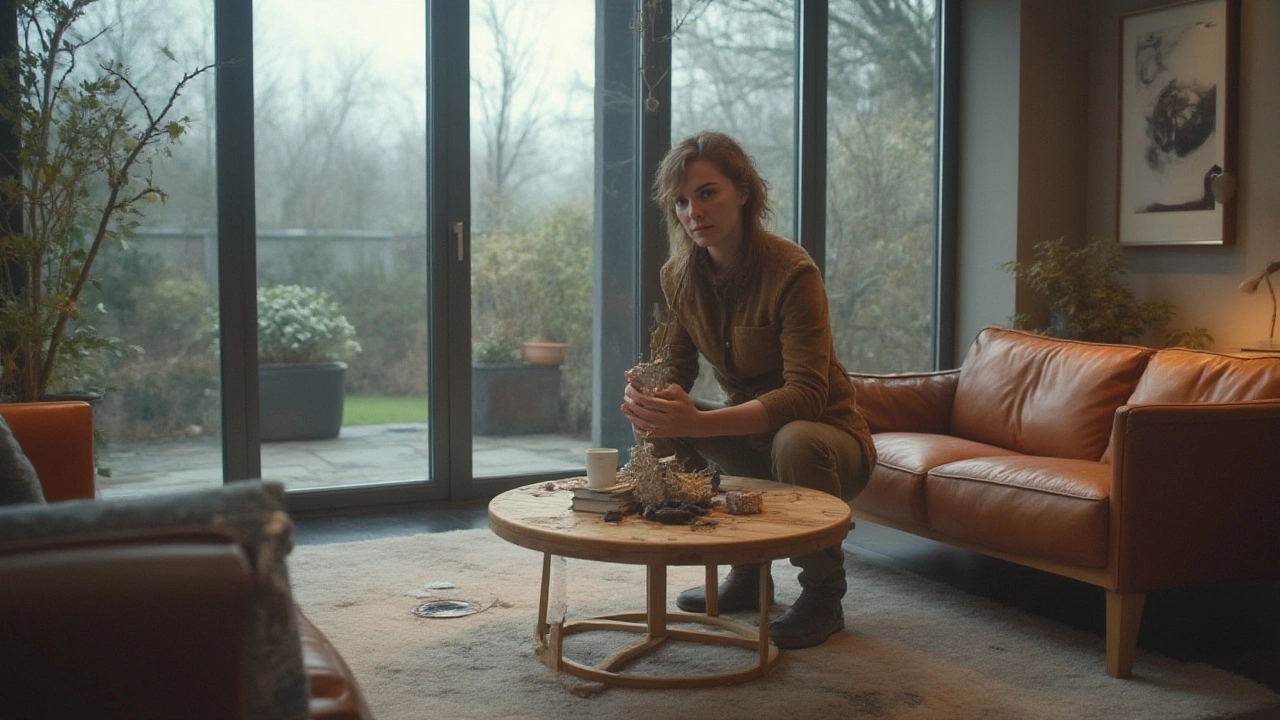
How to Protect Your Furniture from the Cold
People spend big when it comes to indoor furniture, but then leave those same pieces in an unheated storage unit or jammed in a drafty garage when space runs out. Want to avoid splitting, warping, or fuzzy mold surprises in April? It’s not about buying expensive covers or spray-on sealants (though those help a little)—it’s about smart, common-sense planning.
First, the golden rule: keep furniture in climate-controlled conditions whenever possible. Most pros agree—and major furniture companies quietly confirm—that 55°F to 77°F (13°C to 25°C) is a safe range for most home pieces. When moving, never let furniture sit in an unheated truck overnight during a freeze. If you have to store something temporarily, wrap it in thick plastic sheeting lined with blankets or bubble wrap for insulation. For extra-sensitive pieces, consider renting space inside rather than rolling the dice with a non-climate controlled unit.
Humidity control is as vital as temperature. Dry winter air sucks moisture out of wood, making it brittle. If you have to store solid wood pieces, use portable humidifiers or at least leave open dishes of water nearby to raise the air’s moisture. Avoid direct contact between wooden feet and concrete floors—use scrap wood or rubber pads to lift furniture up, since cold seeps up from the ground faster than through air. If you spot condensation inside plastic covers, ventilate and dry immediately—trapped moisture is a mold party waiting to start.
Leather care is a little different. If you’re storing leather sofas or chairs, condition them before winter with a recommended leather balm. Before wrapping, make sure it’s totally dry, then use a soft, breathable cover—not tight plastic. The goal is to prevent trapped humidity while still keeping out frost. For fabric upholstery, mothballs or silica gel packets hidden inside can prevent mildew or unpleasant scents from forming.
Metal furniture mostly needs rust resistance. Clean, dry, and apply a thin coat of car wax to protect against moisture, especially if you’re storing tables or chairs outside. If you notice chips or scrapes in painted finishes, repair them before storage—water finds its way in through the tiniest spots, and freeze/thaw cycles magnify the problem fast.
If you absolutely must keep some pieces in the backyard or shed, invest in covers made for the job—thick, UV-resistant tarps with vented sides. But always check inside after storms or big freezes. Remove snow and ice immediately—even treated woods and metals can’t stay wet, cold, and exposed for months at a time without suffering.
Don’t forget about furniture in rarely heated rooms—the attic, basement, or that porch you never use in January. It’s easy to ignore, but these spaces swing wildly between cold and warm, dry and damp. A cheap indoor/outdoor thermometer with a humidity sensor lets you keep an eye on things. If temps dip near freezing, move those pieces or boost the heat temporarily to prevent damage.
One overlooked tip? When moving furniture out of cold storage back into a warm home, let it acclimate slowly. Quick, drastic changes in temperature invite cracking, glue joint splits, and nasty condensation—just like shocking a frozen windshield with hot water.
When to Worry: Identifying and Fixing Cold Damage
You just pulled the old family rocker from cold storage, and it creaks in a new way or feels wobbly. Is it ruined, or can you fix it? Cold damage doesn’t always mean disaster, but catch the signs early and you might save your piece (and your sanity).
The most obvious red flags: large, visible cracks in wooden surfaces, sprung joints (corners that wiggle when they shouldn’t), lifted veneers, splitting along seams, and white chalky outfits on leather or powder-coated metal. If you nudge a bookshelf and it feels loose or flaky, probe those joints; if glue has failed, it may come apart in your hands. Leaning bookshelves or warped tables sometimes straighten out when returned to warmth, but deeply split or bowed pieces won’t recover without professional help.
If you spot mildew or musty smells, don’t just air the piece out: strip down any removable panels or cushions and let them dry thoroughly indoors. Treat wood gently with a mix of water and vinegar to kill spores, and toss any fabric that’s deeply infested. Mold grows in upholstery at temps as high as 40°F (4°C), so don’t assume “cold means clean.” For metal, light rust can be scrubbed and repainted, but deep pitting means the piece is probably living on borrowed time.
Glue failures and minor splits in wood are often repairable at home with wood glue and clamps—just warm the piece first and work in a stable environment. If an antique has lost its joints or rare veneer has lifted, it’s probably worth consulting a local restoration expert. Don’t pull, yank, or force things back into place cold—heat them gently first, or else cracks can get worse.
If you catch damage early, you stand a good chance of extending your furniture’s life. If repairs seem too complex or risky, sometimes the kindest thing you can do is retire the piece—or recycle it into something new, rather than letting it sit and rot.
One last thought: furniture loves stable environments more than anything else. Extreme cold is rarely just a single event—it’s usually paired with wild swings in humidity and temperature that do the most harm. Keep your home’s precious pieces where you spend your own time, and strongly reconsider leaving furniture outside or in storage during long winter months. When in doubt, treat your best-loved table or sofa as carefully as you’d treat a musical instrument or important artwork.

